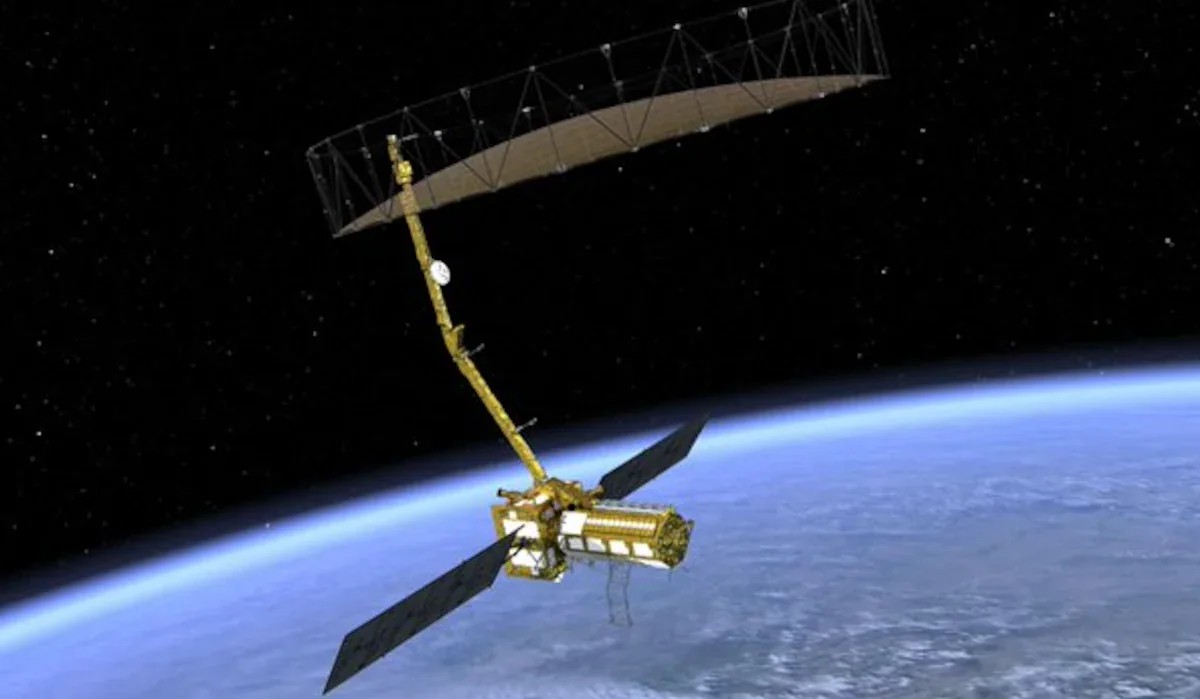Key Highlights
NASA, in collaboration with ISRO, has successfully deployed the largest antenna reflector ever sent to space, marking a historic milestone for both agencies and the broader climate science community.
The 12-meter (39-foot) drum-shaped radar antenna—mounted on the NASA-ISRO Synthetic Aperture Radar (NISAR) satellite—was unfurled in low Earth orbit 17 days after launch, using a sophisticated unfolding process described as the “bloom.”
Why This Antenna is a Game Changer
Built from lightweight composite struts and a gold-plated wire mesh, the reflector was designed to be stowed compactly for launch and then expanded into its massive, precise dish configuration in orbit.
The surface area and dual-band L- and S-band radar systems enable NISAR to return high-resolution radar images through clouds, vegetation, or darkness, allowing scientists to record Earth’s transformations with unmatched detail and frequency.
This innovation empowers researchers to monitor and model phenomena like glacier movement, seismic activity, river erosion, crop growth, urban expansion, and even landslides—crucial for environmental resilience and disaster preparedness.
How the Deployment Unfolded
After launching from India’s Satish Dhawan Space Centre on July 30, the NISAR satellite’s reflector began to deploy a 9-meter boom on August 9, extending joint by joint over several days.
On August 15, exploding bolts released the reflector’s tensioned frame, allowing the “bloom” as motors and cables drew the mesh outward into its final, locked shape.
Project lead Phil Barela hailed the engineering as the culmination of years of design and testing, emphasizing the international partnership at every stage.
The Mission’s Ambitious Goals
NISAR is slated to begin full science operations by late October 2025, and will offer near-global coverage every 12 days.
Its advanced radar will provide time-lapse 3D maps monitoring ground surface changes as small as a few centimeters—even in challenging weather—making it possible to predict natural hazards before they strike.
The $1.3 billion project is the world’s most expensive civilian Earth-imaging mission to date and is expected to play a pivotal role in forecasting disasters, managing crops, and supporting global food and water security.
Global Significance and Future Impact
The deployment signals the dawn of new Earth observation capabilities, serving disaster managers, environmental planners, and governments worldwide.
NISAR sets a new benchmark in technological ingenuity and international space cooperation, reflecting what joint missions can accomplish for global good.
Decision-makers and communities will gain powerful new data, enabling faster and more precise responses to environmental and humanitarian challenges.
Conclusion
NASA’s record-breaking deployment of the NISAR antenna opens a transformative new chapter for Earth science and humanitarian efforts, promising landmark insights for disaster preparedness, climate change research, and sustainable development.
Source: NASA-JPL, Times of India, Tribune India, NDTV, Indian Express, Daily Galaxy

